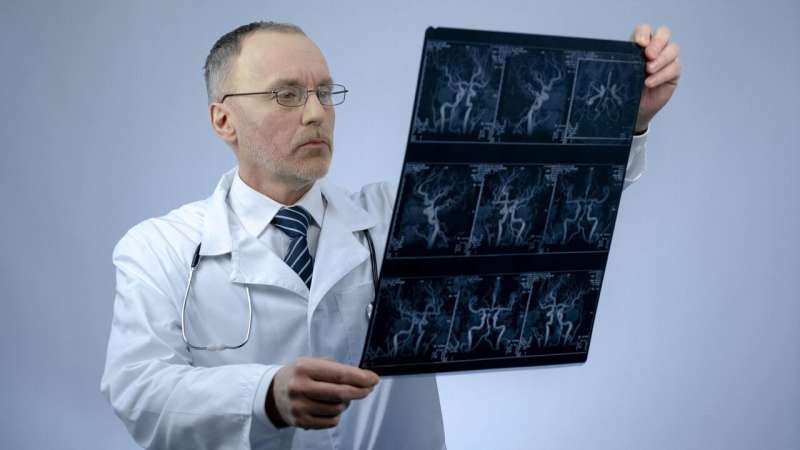For computation of the skeletal muscle index (SMI), calculated as skeletal muscle area (SMA) at L3 divided by patient height squared, a height scaling power of 1 seems better than 2, according to a study published online Oct. 25 in the American Journal of Roentgenology.
Louis Blankemeier, from Stanford University in California, and colleagues examined the optimal height scaling power for SMA measurements on computed tomography (CT) in a retrospective study including 16,575 patients who underwent abdominal CT from December 2012 through October 2018. Using automated software, SMA at L3 was determined. The sample of patients was categorized into 5,459 patients without major medical conditions, used for determining optimal height scaling power, and 11,116 patients with major medical conditions for testing this power. An allometric analysis was used to determine the optimal scaling power.
The researchers found that the regression coefficient of log(height) in patients aged 40 years and younger was 1.02 in men and 1.08 in women in the allometric analysis and was 1.07 in men and 1.10 in women among patients aged older than 40 years.
The optimal height scaling power was 0.97 in men and 1.08 in women among those aged 40 years and younger and 1.03 in men and 1.09 in women among those older than 40 years in analyses for statistical independence of SMI from height. In men and women, SMI significantly predicted all-cause mortality with a greater concordance index in the Cox model used for testing using a height scaling power of 1 versus 2 (0.675 versus 0.663 and 0.664 versus 0.653, respectively).
"The findings call for a reconsideration and possible revision of the current convention of using a height scaling power of 2 in defining SMI, a standardized metric of muscle quantity for purposes of sarcopenia diagnosis," the authors write.
Several authors disclosed ties to the health care and information technology industries.
More information: Louis Blankemeier et al, Skeletal Muscle Area on CT: Determination of an Optimal Height Scaling Power and Testing for Mortality Risk Prediction, American Journal of Roentgenology (2023). DOI: 10.2214/AJR.23.29889
Journal information: American Journal of Roentgenology
Copyright © 2023 HealthDay. All rights reserved.
























